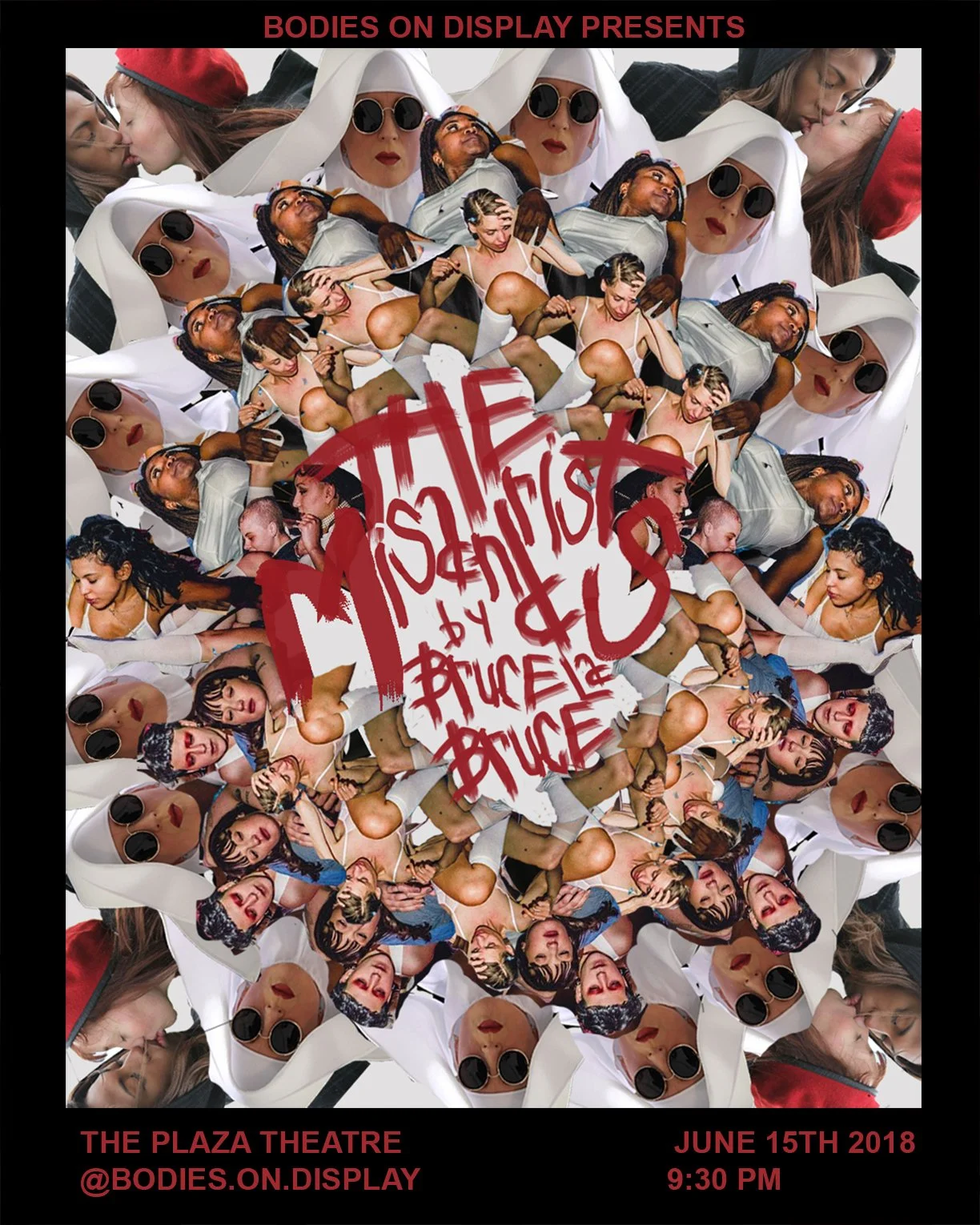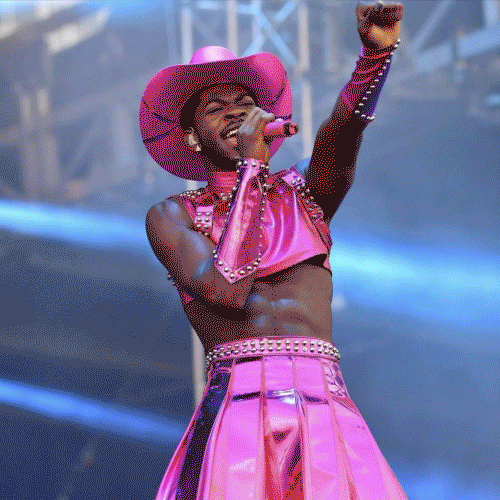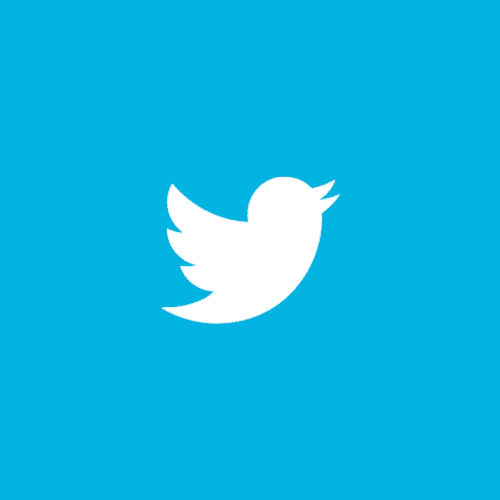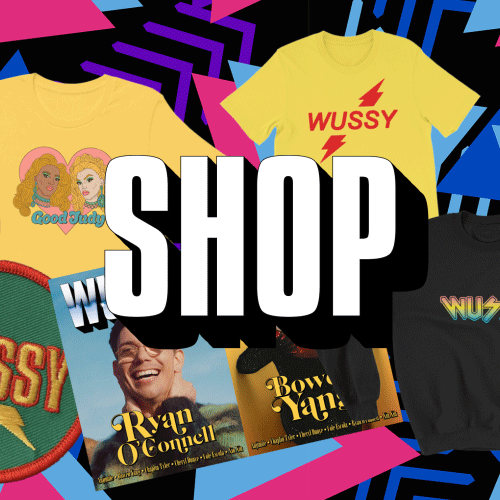Interview: Bruce LaBruce Critiques Second Wave Feminism With ‘The Misandrists’
THE MISANDRISTS, CARTILAGE FILMS
Throughout the span of time, powerful feminist figures have been polarizing archetypes viewed as threats to patriarchy. Today, we say that is passé and absolutely incredulous. Let’s ponder, what would an army of radical, badass lesbians look like?
In comes The Misandrists -- the new feature film by Bruce LaBruce that puts that fantasy to the test. A provocateur for decades, LaBruce is one of the fathers of queercore (an offshoot of 80s punk), the political movement that unabashedly pushed an agenda of overt homosexuality, specifically as it pertained to gay men. Now, he’s switching gears and gender roles, with an anarchist lesbian flair.
The Misandrists is premiering at the Plaza Theater in Atlanta on June 15, with a post screening discussion moderated by Bodies On Display. The film tackles significant issues pertaining to feminism’s exclusionary history, the premise of female dictators, and the impact of intersectionality creating a more unifying feminism for all womyn!
Bruce LaBruce jumped on a call recently to discuss this and more about his incendiary film, The Misandrists.
Can you broadly discuss the radical politics of The Misandrists?
BRUCE LABRUCE
It’s about a group of lesbian separatist essentialist feminist terrorists set in 1999. It’s a critique of second wave feminism and certain aspects of post feminism from the perspective of radical lesbians who think that pornography is a radical expression of sexuality that can be used for political purposes. So these radical lesbians make their own lesbian porn which is really designed more as propaganda than anything else.
What aspects of film history and aesthetics inspired your vision?
There's so many cinematic influences and references in The Misandrists. I was referencing a lot of different genres like Nunsploitation and sexploitation movies of the 70s. Those kind of erotic softcore movies that often had lesbian undertones to them. Also certain Hollywood films from the late 60s and early 70s. A-list films that have more of B movie atmosphere like, The Beguiled by Don Siegel which Sofia Coppola recently remade, and Robert Aldrich’s The Dirty Dozen. I’m referencing my favorite nun movie, The Trouble with Angels directed by Ida Lupino. One of my main inspirations for the film was the writing of Ulrike Meinhof, who was one of the main four members of the Red Army Faction, the extreme left wing terrorists from Germany in the 70s. She wrote a movie called Bambule which is about a girls reform school. Then there is Morrissey and Warhol’s work, particularly Women In Revolt. Some of the critique of feminism from that film but also the celebration of feminism at the same time. That’s about it. Aesthetically, I tried to make it as pretty as possible. It’s supposed to be very romantic and aesthetically pleasing.
You are a queer pornographer that’s primarily worked with men. Did you have a different experience working with mostly women this time around?
Yeah, I’ve made some films like L.A. Zombie and Hustler White that only have male characters, but a lot of my films do have strong female characters. My film Otto has a main character who is a very imposing lesbian filmmaker, and Gerontophilia has a very revolutionary young girl as lead, but I’ve never made an all female film before. A film with an almost all female cast. That’s exactly why I made the movie! It's something I’ve always wanted to do for a very long time. My film The Raspberry Reich is about left wing radicals but it didn't really have lesbian characters. My lesbian friends always said, “you have to make a movie about lesbian extremists,” so that's what I did. It was really great! Much of the cast and crew were female like the musical composer, the costume designer, two of the producers, the sound recordists, and the sound designer. There was a lot of female energy on the set. We were filming in an old house in the German countryside, a two hour drive from Berlin. The crew stayed on location and the cast at local hotels. We were thrown together in this remote location and the women on the film particularly the female cast members bonded very strongly together. There was kind of a parallel movie going on that I wasn’t even privy to in a way. All these women hanging out together sharing stories. The more mature actresses were kind of mentoring the younger girls. It was really cool in that regard. To do lesbian softcore pornography was interesting for me as well. It was a much different process that was collaborative with the actors. For the orgy scene, I just left them all alone in a room, and they all discussed what they were and weren’t comfortable with. It was all very much about people expressing sexuality but in a way that made them comfortable.
Do you see any powerful purpose to pornography?
SUPER 8 1/2, 1994
Well yeah, personally, I think pornography does serve a valuable purpose. Sex is a very powerful, untamed force of nature. It really has to have expression. A lot of us have politically incorrect sexual fantasies that obviously can't be acted out upon, so porn is kind of this play space in a way. This fantasy space where we can work out these dark or extreme sexual fantasies. It has a cathartic function and it’s also pleasurable. I've always used porn in what I consider a political strategy, gay porn in particular. When I was a punk in the 80s there was a lot of homophobia in that scene or just in general people were. There was a lot of free floating homophobia. My idea was to use sexually explicit imagery in my films as much as possible to be very militant and in your face about the reality of gay sex and not pander to some kind of liberal idea of tolerance. To be tolerated by the mainstream or by straight people as long as you are a good gay and don't push things to extremes. As long as you’re not flaunting your homosexuality. So I used porn to flaunt it as much as I could!
When it comes to performance, is there a relationship between eroticism and fetishes?
A lot of my movies are directly about fetishes. Starting back with my first film, No Skin Off My Ass, which has some S&M imagery, boot licking, and toilet licking even though it’s in a dream sequence. In Hustler White, the infamous stump fucking scene, the amputee fetish. Skinheads as a kind of fetish. Gerontophilia is of course about the specific fetish for the sexual attraction to the elderly. According to Freud, anything that does not contribute directly to the procreative sex act is a fetish. By that definition, even a kiss, is a fetish. It's hard to avoid representing fetishes when your making films about sex. For me the point is, eroticism is quite often just that. Something that isn't so obvious as the blatant kind of sex act, the act of intercourse. It's about the romance around the sexual object. Fetishist can express a great reverence for the object of desire, almost worship. It has a spiritual dimension. That’s more what I think eroticism is. It’s an expression of that kind of romance for all things that contribute to a sexual fantasy.
What is your argument to the anti-pornography rhetoric?
Anti-porn feminist have been around forever. They were quite vocal in the 80s. I’ve always been totally discreet with them. Though, I understand their critique of pornography. I called a book of mine, The Reluctant Pornographer because I do have ambivalence to certain aspects of porn. I'm well aware of how people are exploited in porn, particularly women. That it can prey on vulnerable people who when they enter the industry have some kind of sexual abuse in their background or sexual trauma. They can be exploited by the industry. It’s a huge industry and a lot of it is very professional with ethical practices and oversight with a respect of consensual sex and the boundaries of the performers. Like any industry there is certain aspects that are corrupt or exploitative. But I don't think it’s indicative of… it’s not an indictment of the entire industry. There's so many kind of pornography now, so much personal pornography and people expressing themselves online. The average person putting erotic or pornographic photos of themselves online on social media and sex sites. It's really become very normalized in a lot of ways and i think that's probably a good thing because it allows peoples to express their sexuality as opposed to repressing it.
Culturally, people are more confident expressing their sexuality and exposing their bodies. Why are people so scared of pornography?
There's a kind of schizophrenic reaction to it these days. It's so ubiquitous and children are even exposed to it from a young age on the internet. As well, because of the regression to conservative values In America, they are trying to cut down on open expressions of sexuality. They just closed down Craigslist (connection ads) and Backpage, so there is an inconsistency there.
THE MISANDRISTS, CARTILAGE FILMS
There are some amazing actors and performers such as Susanne Sachsse and Kembra Pfahler in your film. It’s a fabulous cast... some are typically seen in porn others are not... how was it on set and these two opposing practices convening?
A hodgepodge of different styles of acting with different kinds of performers. I cast Susanne who started out as a theater actress who I’d worked with quite a lot. Kembra’s work as a performer and musician is quite theatrical as well, kind of like performance art. Viva Ruiz, who plays Sister Dagmar is also a performance artists. They come from a more art or theater tradition. We also cast using an agency so there's a couple young actresses who act more in film and T.V. That’s a different kind of style! Then there’s some non-professional actors. There's a couple of girls, who make their own kind of feminist porn so they have a different style as well. It’s just about embracing all styles and making it consistent. “Camp” works best when it's played straight without winking at the audience or anything. Have the actors commit very seriously to the roles, even if its melodramatic, and it's not about naturalistic acting at all. People always complain about the bad acting in my films. They don't get that it comes from a tradition of gay camp, and melodrama, and this intermixing of professional and non-professional actors. When I work with a porn star which I have many times in my films the challenge is to get them involved. To be excited about having an actual acting job. To get them into it. They're not used to in porn delivering complex dialogue or whatnot, and most of them love the challenge of doing it. Their performances may not seem up to the standard of professional acting. They're still interesting, the way they commit themselves to the role, and give the best performance they can. Everything has to be consistent, the cinematography, the acting, the tone. The balance between sincerity and sarcasm. The political critique, which is both, supporting feminism and critiquing it at the same time, it's all a delicate balance.
Will there be more after this film, perhaps a sequel?
I wouldn't rule out making another film about terrorists, or extremists which is something that really fascinates me. In fact, Ulrike’s Brain, is a little film within the film in The Misandrists that Susanne stars. I made that into an hour long film which is also about political radicals; two rivals, an extreme right wing neo nazi and extreme leftist feminist radical.
Do you feel that “queerness” has been co-opted by the masses? Does that notion express anything about the future of sexuality?
I recently interviewed and did a profile of Phillip Picardi, the editor of Teen Vogue for Fantastic Man. He has that new queer platform on social media, them., the website. It represents a new kind of queer consciousness. You could say it's been co-opted to some degree because it very corporate. It’s coming out a very corporate environment, Conde Nast, and attitude towards mainstream media. That kind of reality is the new default for queer youth. They are born into a world of brands, and corporate advertising, fashion, and entertainment. They don't really know anything else, that's their reality! When I was making queer films in the 80s we were completely anti-corporate. There was still an underground. It was before the internet. We self published everything. We advertised ourselves. We didn't use advertising in our fan zines. It was all DIY. The punk bands at the time all had independent labels. It was a whole different strategy and approach. At that time there was a such thing as an underground or an avant garde, that existed as more of an invisible entity, something you had to seek out and look for. Now the model is the internet, and social media is so over determined that its hard to make your voice heard in that context. Everything is available, immediately, instant gratification. So it still kind of makes sense that its a more mainstream concept now. We also talked about old school gay. To me it means pre-liberation, late 60s-70s, which is about militant sexuality, being separated from society, celebrating outside status, and going against the grain, predominate order. Now it’s about working within that system and trying to make it more universal. Recently, Gucci put out a line of shoes called “Queercore.” The aesthetic had nothing to do with queercore. That's the kind of co-option that seems to be exploiting underground erotica culture.
You’ve been able to maneuver between the art and film worlds simultaneously. Do you have a preference ?
Cinema is my first love. I'm a total cinephile, that's my primary focus. The art world has never been that receptive of me. They've always found my work too pornographic. I work too strictly within the porn idiom to the point of really making porn that I consider art as well. In fact, I consider all pornographers artists of some kind. Its a creative process. It's a kind of filmmaking too. The art world, they rejected me for being too pornographic. And the porn world rejects me for being too artistic. Again, I’m kind of the outsider in both worlds. For me cinema is the most important discipline.
POSTER ART BY SHANISIA PERSON
Who are some artists you’re currently looking at?
A lot of the people I worked with who are in my film...Kembra. No Bra, who does the love scene, “Down With The Patriarchy”, she's a really great artist. I worked with Desi Santiago, who did production design. He’s designed some major tours for Britney Spears and Madonna. I like contemporary gay artists like Scooter LaForge, Slava Mogutin, Cody Critcheloe of SSION, Casey Spooner, Gio Black Peter, Ryan Trecartin. There’s this artist, I'm not sure if he's even gay but he's very queer, Petr Pavlenski, nailed his scrotum to cobblestone in Red Square, an amazing performance artist.
I love reading Academy of the Underrated, queer analysis of movies from the past. Do you think all along some films have been “queering” us?
Oh yeah absolutely! I studied with famous art and film critic Robert Wood. He always talked about the homosexual subtext in classical Hollywood movies, anything from Howard Hawks movies, macho westerns, or films by gay directors, Vincente Minnelli or George Kuchar. He would talk about how there's a latent thread of homsexual themes running through the movies. I would say horror movies are based on homosexual panic for example, or B movies always have a thread of homosexual references. I wrote for Academy of the Underrated about this teen high school movie, Over the Edge, and I listed 23 homophobic references. This kind of fear of “otherness,” of homsexuality, runs through a lot of Hollywood movies. Sexual repression is a theme from a lot of these movies. What I've done with a lot of my films is I’m “queering” straight movies, or mainstream movies. My version of the story or film brings out that latent subtext. I did it with That Cold Day in the Park, the Altman movie which I remade as my first film, No Skin Off My Ass. It queers that movie or The Misandrists, as a loose remake of The Beguiled.
Finally, you wrote an amazing essay on “Notes on Camp/Anti-Camp.” Can you discuss the thesis of that piece and its relevance to your new film?
I was basically reinvestigating Susan Sontag’s famous essay Notes On “Camp” about the camp sensibility, and aesthetic. One thing I strongly disagree with is she made the claim that camp is apolitical and unengaged politically, and that's ridiculous. The whole point of camp in terms of being a queer sensibility is it was exactly a kind of secret language between homosexuals that was adopted because they were marginalized and had to communicate invisibly, or secretly, like code words. A kind of sensibility that they shared and straight people didn't really understand. In that sense it's totally political, and it also has a direct political meaning just in terms of acting out against mainstream conventions. Its extreme appreciation of artifice and theatricality, in itself is kind of a political statement against very conventional straightforward mainstream entertainment.
Bodies On Display is a curatorial project on Gender and Sexuality in Visual Culture. It aims to highlight the intersections between erotic art, pornography, fetish, and performance. The next screening will be Narcissister Organ Player showing date TBA.
Archive
- February 2025
- November 2024
- October 2024
- September 2024
- August 2024
- July 2024
- June 2024
- May 2024
- April 2024
- October 2023
- July 2023
- June 2023
- May 2023
- April 2023
- March 2023
- February 2023
- June 2022
- April 2022
- March 2022
- January 2022
- December 2021
- October 2021
- September 2021
- August 2021
- July 2021
- June 2021
- May 2021
- April 2021
- March 2021
- February 2021
- January 2021
- December 2020
- October 2020
- September 2020
- August 2020
- July 2020
- June 2020
- May 2020
- April 2020
- March 2020
- February 2020
- January 2020
- December 2019
- November 2019
- October 2019
- September 2019
- August 2019
- July 2019
- June 2019
- May 2019
- April 2019
- March 2019
- February 2019
- January 2019
- December 2018
- November 2018
- October 2018
- September 2018
- August 2018
- July 2018
- June 2018
- May 2018
- April 2018
- March 2018
- February 2018
- January 2018
- December 2017
- November 2017
- October 2017
- September 2017
- August 2017
- July 2017
- June 2017
- May 2017
- April 2017
- March 2017
- February 2017
- January 2017
- December 2015
- November 2015
- October 2015
- September 2015
- August 2015
- July 2015
- June 2015
- May 2015
- April 2015












